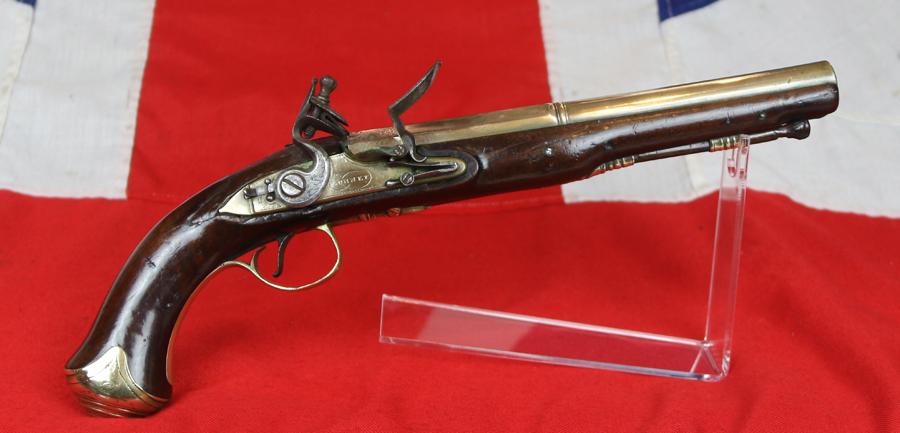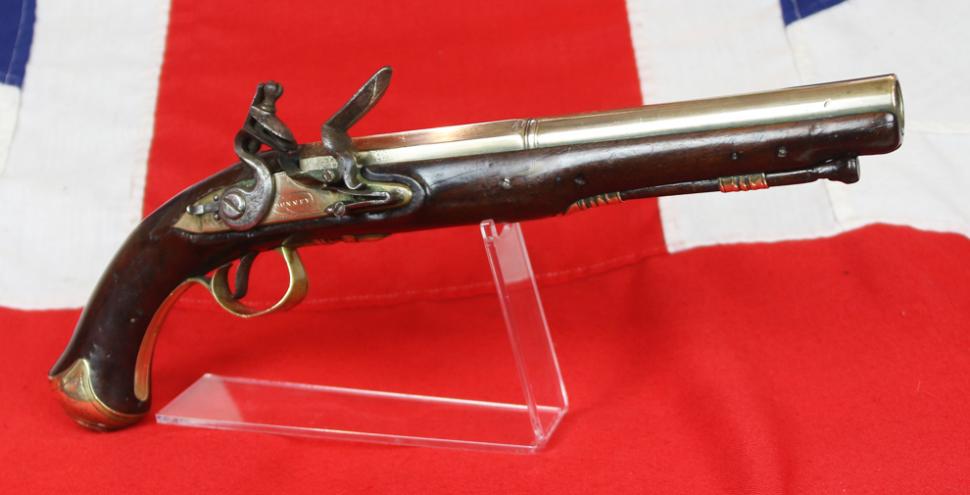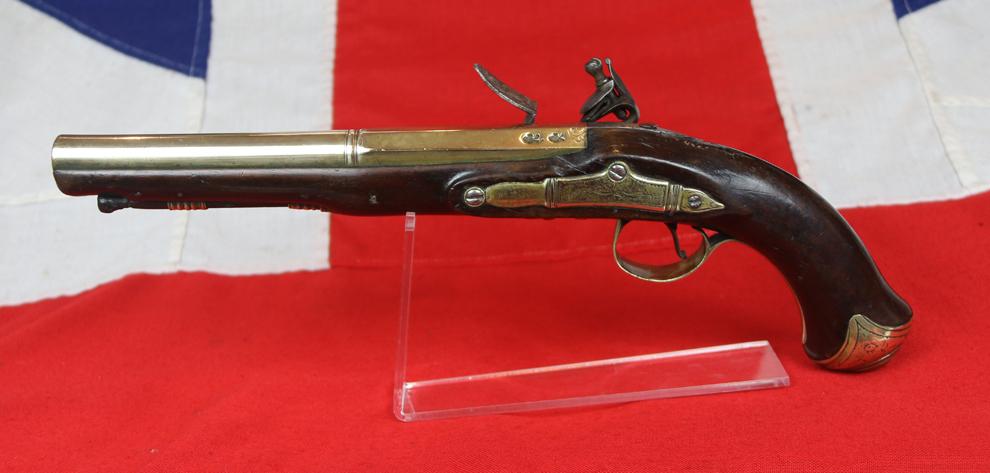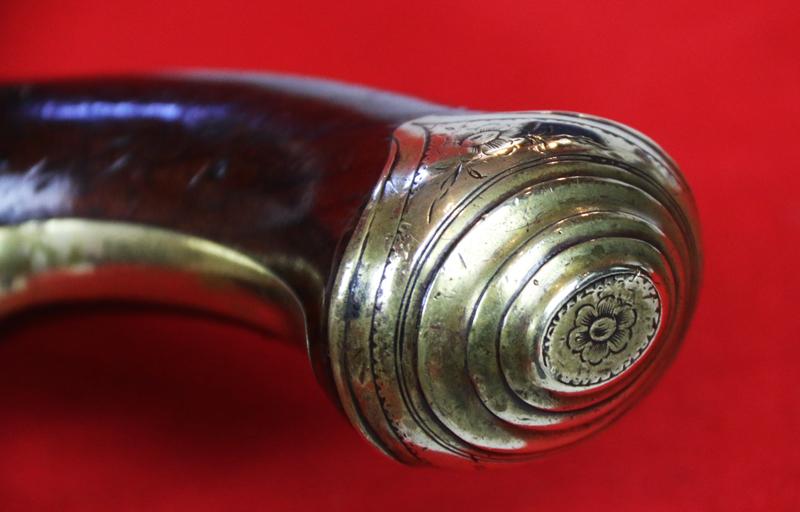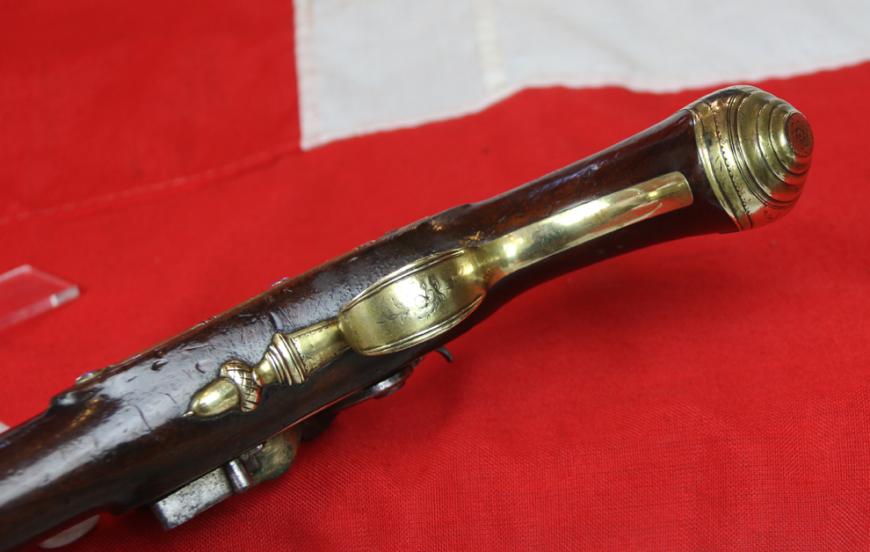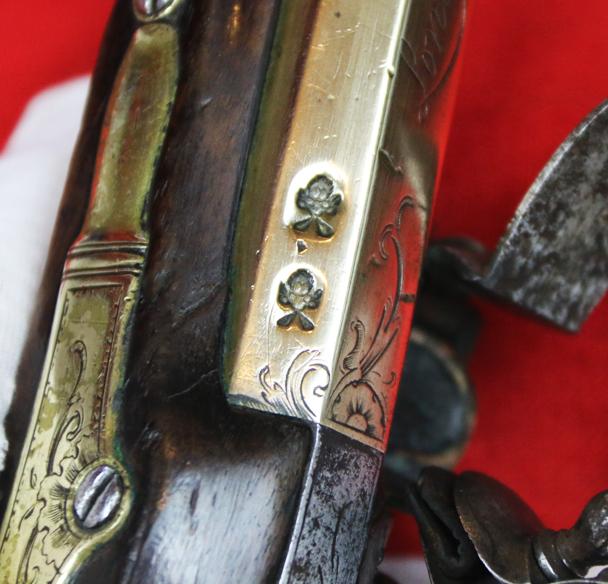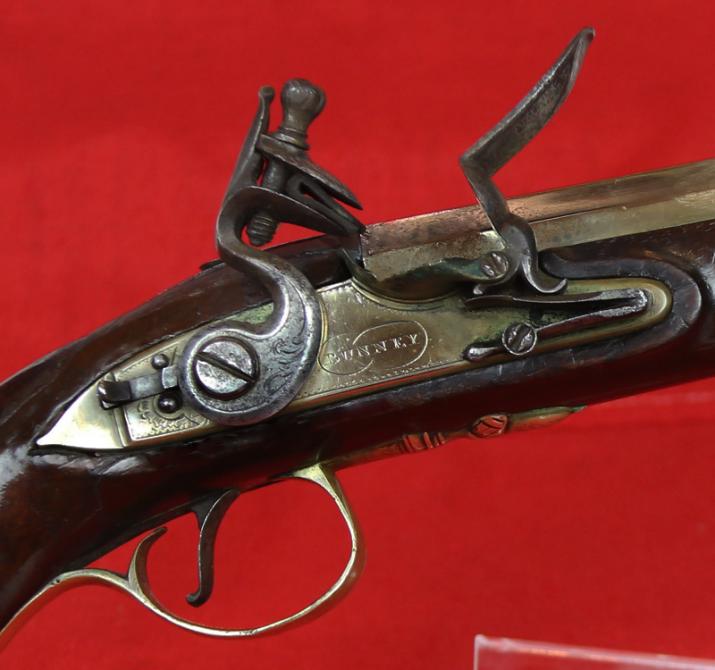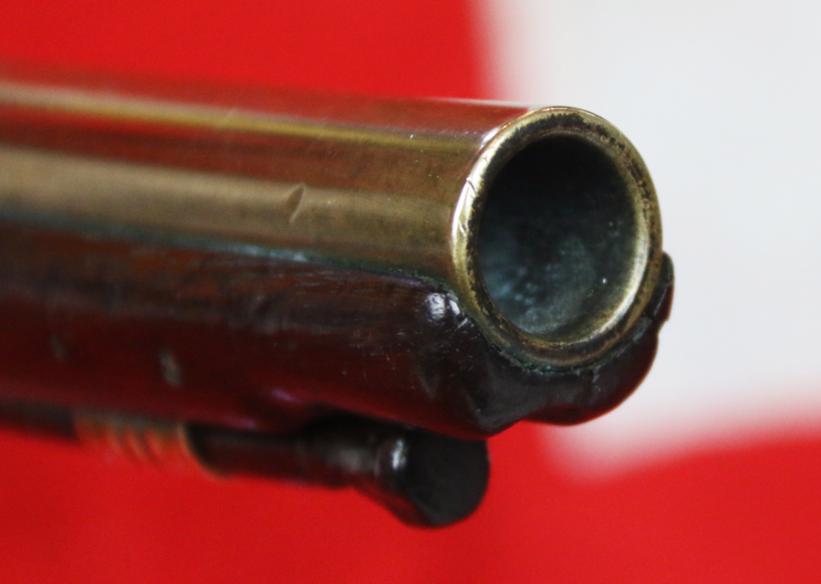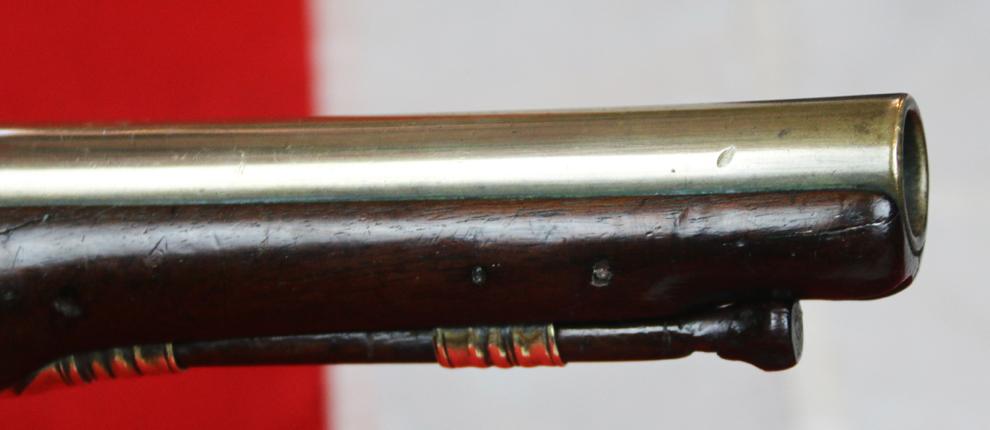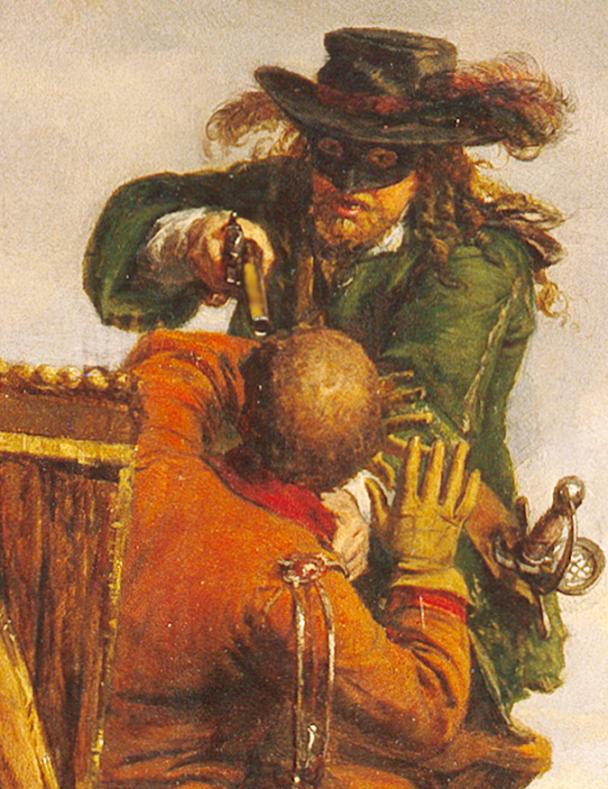A Beautiful 18th Century, London Marked, 1770's Brass Flintlock Blunderbuss Pistol, All Brass Mounted. By Renown Master Gunsmith Mr Joseph Bunney. A Stunning Rarity & A Museum Piece Worthy Example.
Royal Naval Captain's Pistol. The lock has a sliding safety is maker inscribed, and marked the top barrel flat at the breech end "LONDON" and made by a fine English maker, the left rear flat is marked with two regular crown over sceptre proofmarks. Fine quality rococo scroll floral engraving on the breech end of the barrel, trigger guard, buttcap and on the left side plate. All original wooden ramrod with swelled head and mounted with a full juglans regia walnut stock.
The brass has been lovingly polished over the past 250 years and has a superb and mellow natural age patina. There is light trace pitting on the frizzen. The stock has a similar fabulous naturally polished age patina, with a couple of very minor cracks on the rear of the lock. The markings are clear.
Rococo Style: His pieces often feature intricate, chiselled bas-relief scrollwork and floral patterns in the Rococo style.
High-Quality Construction: Bunney's work is noted for its superb quality, elegant proportions, and tasteful Georgian mountings.
His active period was approximately 1765 to 1814, and his surviving firearms, which include pocket pistols, coaching pistols, and repeating guns, are considered highly accomplished examples of the era.
A pair of his revolutionary war use pistols by Joseph Bunney are owned by the New Hampshire Historical Society in America, of General Joseph Cilley (1734-1799), of Nottingham, NH. A pair of pistols presented to him by the New Hampshire Assembly, March 16 or 19, 1779, by resolution "that the worthy Colonel Joseph Cilley be presented with a pair of pistols as a token of this State's intention toward merit in a brave officer." Colonel Cilley carried those pistols in the campaign against the Indians in New York, in which he was soon engaged (1779). The pistols were awarded for acts of bravery during the American Revolution.
These kind of all brass pistols were the weapon of choice for naval officers and ship's captains in the 18th century for use at sea. This is a superb example. The muzzle (and often the bore) was flared with the intent not only to increase the spread of the shot, but also to funnel powder and shot into the weapon, making it easier to reload in haste. The flared swamped muzzle is one of the defining features of this fabulous pistol. Ship's Captain's found such impressive guns so desirable as they had two prime functions to clear the decks with one shot, and the knowledge to an assailant that the pistol had the capability to achieve such a result. In the 18th and 19th century mutiny was a common fear for all commanders, and not a rare as one might imagine. The Capt. Could keep about his person or locked in his gun cabinet in his quarters a gun just as this. The barrel could be loaded with single ball or swan shot, ball twice as large as normal shot, that when discharged at close quarter could be devastating, and terrifyingly effective. Potentially taken out four or five assailants at once. The muzzle was swamped like a cannon for two reasons, the first for ease of rapid loading, the second for intimidation. There is a very persuasive psychological point to the size of this gun's muzzle, as any person or persons facing it could not fail to fear the consequences of it's discharge, and the act of surrender or retreat in the face of an well armed pistol such as this could be a happy and desirable result for all parties concerned.
French court gunsmith Marin le Bourgeoys made a firearm incorporating a flintlock mechanism for King Louis XIII shortly after his accession to the throne in 1610. However, firearms using some form of flint ignition mechanism had already been in use for over half a century. The development of firearm lock mechanisms had proceeded from the matchlock to wheellock to the earlier flintlocks (snaplock, snaphance, miquelet, and doglock) in the previous two centuries, and each type had been an improvement, contributing design features to later firearms which were useful. Le Bourgeoys fitted these various features together to create what became known as the flintlock or true flintlock.
The new flintlock system quickly became popular, and was known and used in various forms throughout Europe by 1630, although older flintlock systems continued to be used for some time. Examples of early flintlock muskets can be seen in the painting "Marie de' Medici as Bellona" by Rubens (painted around 1622-25). These flintlocks were in use for alongside older firearms such as matchlocks, wheellocks, and miquelet locks for nearly a hundred years. The last major European power to standardize the flintlock was the Holy Roman Empire, when in 1702 the Emperor instituted a new regulation that all matchlocks were to be converted or scrapped. The action is good. 9 inch barrel 15 inches long overall
Code: 23659
2995.00 GBP

